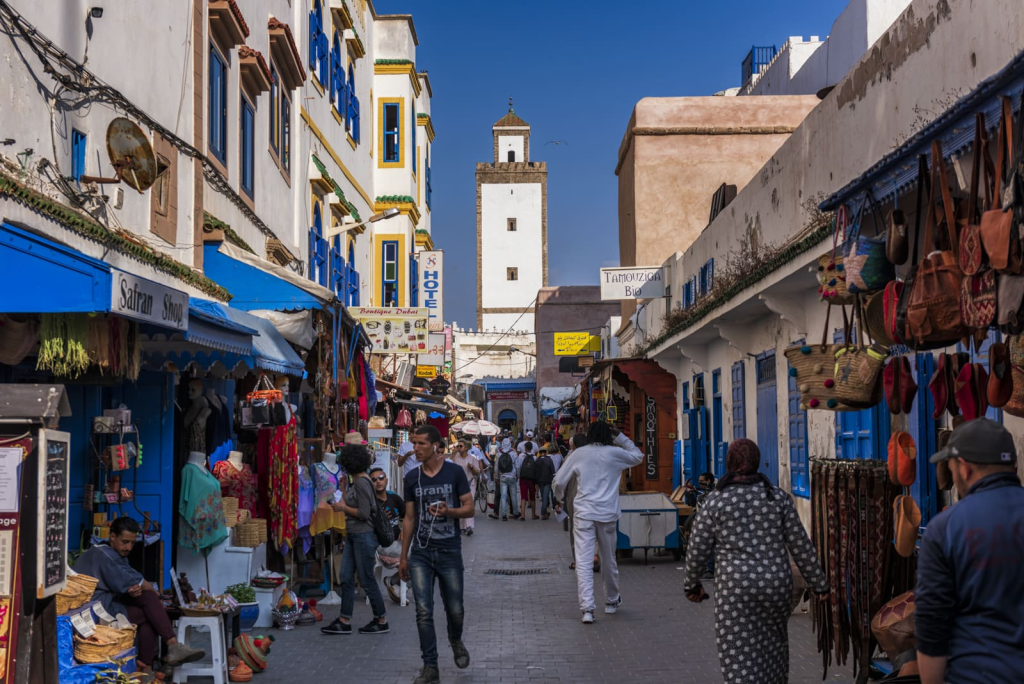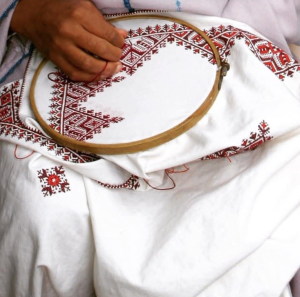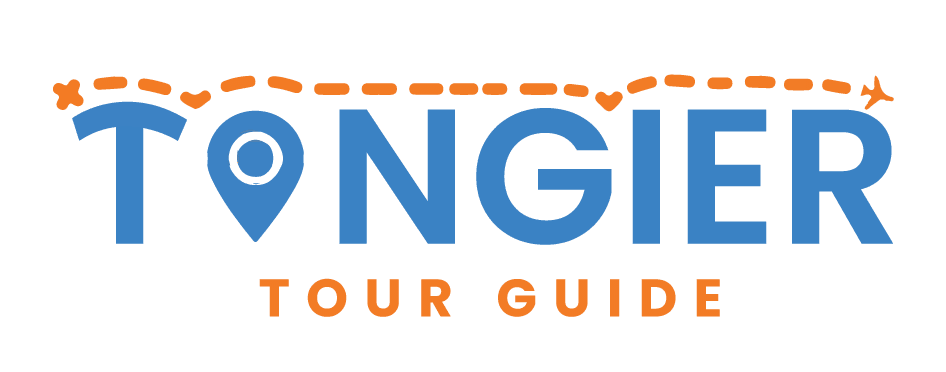Northern Morocco, known as Chamal, is a region where traditions are not confined to museums; they are lived every day in the narrow streets, family homes, and bustling markets. From Tangier to Tetouan, passing through Chefchaouen, Larache, and Asilah, traditional clothing, local cuisine, and daily rituals tell a story of cultural diversity, elegance, and authenticity. This intangible heritage invites visitors to discover a strong identity shaped by centuries of Mediterranean and Andalusian exchanges.

The Elegance of Traditional Clothing in the North
Traditional dress lies at the heart of cultural expression in Northern Morocco. Unlike other regions, chamali outfits are distinguished by their refinement, delicate embroidery, and elegant cuts inspired by Andalusian traditions. These garments are worn not only on special occasions but also in daily life in villages and historic towns.
One of the most emblematic pieces is the Tetouani caftan, renowned for the finesse of its embroidery and the sophistication of its fabrics. These embroideries, known as tarz tetouani, are handcrafted, often on silk or velvet fabrics. Usually in white or gold thread, they feature floral and geometric motifs of great precision. The northern caftan is worn with an embroidered belt and traditional jewelry in silver or gold, often passed down through generations.
The djellaba, a unisex garment worn throughout Morocco, takes on lighter and more fluid forms in the North. Women often wear it in light colors, paired with an elegant scarf or shawl. Men wear striped or white djellabas with traditional babouches (slippers).
In the villages of Chefchaouen and the surrounding mountains, women wear colorful garments with geometric patterns and distinctive straw hats decorated with pom-poms, typical of the Rif region. These clothes are not only aesthetically pleasing but also carry a strong cultural identity and play a role in community celebrations.
Northern Gastronomy: Between Sea, Mountains, and Andalusian Heritage
Northern Moroccan cuisine is among the most refined and diverse in the country. It reflects the meeting of coastal products, inland agricultural wealth, and Mediterranean influences. Traditional meals are prepared with care and often take center stage in family life.
In Tangier and Tetouan, fish tagines hold a special place. Made with fresh fish, tomatoes, peppers, preserved lemons, and mild spices, they are slowly cooked to allow the flavors to blend harmoniously. Savory seafood or fish pastillas, inherited from Andalusian traditions, are another much-loved specialty.
In rural and mountainous areas like Chefchaouen, dishes are simpler yet equally delicious. Rif couscous, typically prepared with seasonal vegetables and fresh herbs, is served with a fragrant sauce and tender meat, usually chicken or lamb. Traditional bread, baked in clay ovens, accompanies every meal. Olives, local olive oil, and dairy products such as goat cheese are integral to everyday food.
Northern desserts also show great variety. Delicacies include gazelle horns delicately flavored with orange blossom, almond feqqas, sweet briouates, and pastries made with honey and sesame. Mint tea, served abundantly throughout the day, is a symbol of warm hospitality.

Traditions and Daily Rituals
In Northern Morocco, traditions extend beyond clothing and cuisine—they shape social, family, and religious life. Religious festivals such as Eid and Ramadan are celebrated with fervor, accompanied by special culinary preparations and family gatherings. Traditional weddings in the North are especially rich in symbols and rituals passed down through generations.
During weddings in Tetouan or Tangier, women wear several traditional outfits, including the caftan and takchita, adorned with antique jewelry. Andalusian songs, zéjals, and local dances enliven the ceremonies. The wedding procession, often accompanied by traditional musicians, parades through the medina streets in a festive atmosphere.
Weekly markets, or souks, are also essential spaces for preserving traditions. They offer hand-embroidered fabrics, spices, traditional clothing, local produce, and freshly prepared dishes. These markets are vibrant spaces of exchange where craftsmanship, gastronomy, and social life come together.
Preserving and Passing On a Living Heritage
Traditional craftsmanship, gastronomy, and cultural practices in Northern Morocco are now facing rapid changes. Modernization, urbanization, and globalization have altered some customs, but many families and associations are actively working to preserve this know-how. Cooperatives of embroiderers, traditional sewing workshops, and local culinary associations strive to pass these skills on to younger generations.
Cultural festivals, especially in Asilah and Tetouan, also play a key role in promoting these traditions. They showcase local creators, highlight typical dishes, and encourage cultural exchange. For visitors, these events offer a unique opportunity to experience Chamal’s living heritage.
A Unique Cultural Experience for Travelers
Exploring Northern Morocco through its clothing, cuisine, and traditions is a profound way to connect with the soul of the region. Attending a traditional ceremony, tasting a tagine in a family home, or observing an embroiderer at work in a medina alley are unforgettable experiences. This subtle, living intangible heritage enriches every journey and offers a deeper understanding of Morocco beyond tourist images.
Tangier Tour Guide offers cultural experiences that allow visitors to meet artisans, taste local specialties, and discover customs in their authentic context. More than just a visit, it is an immersion into a world where every embroidery thread, every dish, and every ritual tells a story.
